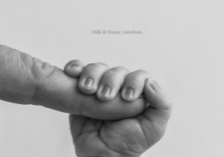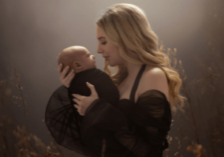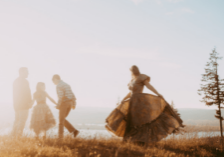The Heart of Photography: Josie Tan’s Approach to Client Connections & Building Relationships in Your Photography Business
A photography career isn’t always linear, and sometimes, there’s a lot of “figuring it out as you go.” This was the case for Josie Tan, a former resident of LA who traded models and magazines for a new life in Oregon as a newborn and maternity photographer.
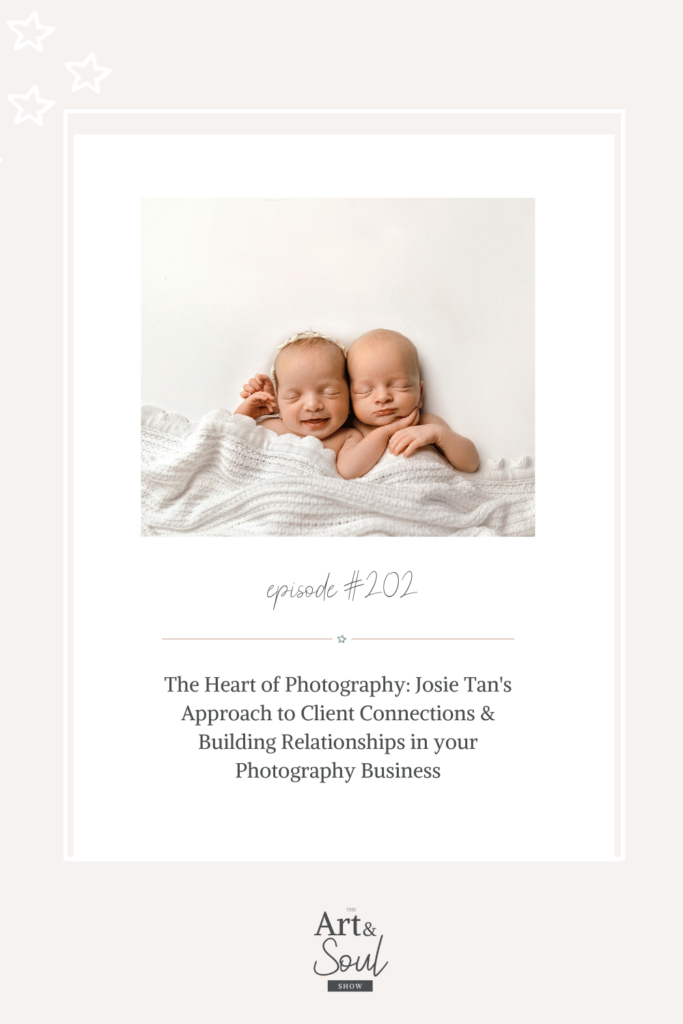
In today’s episode, Josie and I discuss those early years, the factors that prompted her career shift, and how she built her photography business into what it is today. You can expect to learn tips and tricks around marketing and IPS, pricing structure, studio spaces, and even maintaining strong connections with your photography clients. Plus, hear how Josie’s work has evolved and her best advice for aspiring photographers!
So, get cozy, grab your notebooks, and tune in. I’m rooting for you, my friends.
What’s in this episode:
- [03:24] The early years of Josie’s photography career and working in LA
- [07:53] Josie’s transition into newborn and maternity photography
- [08:54] Growing a photography business through marketing and IPS
- [17:26] Determining the right pricing structure for a photography business
- [18:49] Operating a home photography studio versus a rented commercial space
- [21:08] Building and maintaining strong connections with your photography clients
- [26:05] How Josie’s work has evolved and her best advice for aspiring photographers
Tune in to this episode to learn how you can build a successful newborn and maternity photography business.
SUBSCRIBE: Apple Podcasts | Spotify
Connect with Josie
Did this episode provide you with valuable lessons for your photography business? Check out this episode The Lady Behind the Lens – Interview with Denise from Appleseed Photography that offers you even more insight on finding alignment in your business!
Transcript
[00:00:00] Josie Tan: Don’t spend so much time worrying about the things that don’t matter. If I could go back, I would tell myself the same advice, which is worrying about how I perceive my art, how someone perceives my work. Because why would it matter if you’re not getting books? And so I would say, work on your foundations, make sure your business is strong on the back end, and then worry about the looks of your art, because you can always change the visual part of things, but you can’t change the structure of the business. And that’s ultimately what a business is. We have to thrive, we have to be profitable. And so I see a lot of people like spend so much time like worrying about editing or buying props, things that, you know, you’re just spending money on. My motto is always say, you know, spend money on what gets you paid. [00:00:48][48.3]
[00:00:52] Lisa DiGeso: Welcome to the Art & Soul Show, where we dive into heart opening chats on photography, business life, and that messy in-between. I’m your host, Lisa DiGeso, a mom, a photographer and entrepreneur, and I’ll be sharing honest conversations and advice for photographers with insight on mindset, entrepreneurship and creativity. The goal of this podcast is for you to be able to gain insights and strategies that will get you real results. Because let’s face it, having a photography business can be lonely, but it doesn’t have to be. This is the place you can go when you need a boost of encouragement, a kick in the pants and inspiration to pick up your camera. This is the Art & Soul Show. [00:01:34][42.3]
[00:01:35] Lisa DiGeso: Hello, my beautiful friends. Welcome back to the show today. I am so excited to dive into today’s conversation with Josie Tan. Now, I have been following her work for years and I am so excited to be able to have this conversation. She’s a newborn, a maternity photographer located in Oregon. So without further ado, here’s Josie. Welcome. [00:01:55][20.9]
[00:01:57] Josie Tan: Thank you so much. Thank you for having me. You know, I’m kind of nervous, but excited. I’m just trying to make sure I don’t curse. [00:02:03][6.6]
[00:02:04] Lisa DiGeso: I love it. So tell us really who you are and what you’re passionate about. [00:02:09][5.1]
[00:02:10] Josie Tan: You know, I feel like all of our audience are on the same line. And the wavelength of being a photographer kind of juggling between, you know, being a mother and having a family and then as well as dedicating to our business. So I’m super passionate about making everything work. And I want, you know, everything is balance, right? And so to me, I feel like I am the happiest when I am not overworked, when I am being profitable, as well as being able to spend time with my family. So that is my ultimate goal in life. [00:02:44][33.9]
[00:02:44] Lisa DiGeso: Yeah, I love that. I think that’s so funny. Well, that’s so funny. I think it’s sad sometimes when you hear photographers chasing this, whatever it is, six, seven figure goal without realizing if that was really what success feels like to them. You know what I mean? Because it sounds like you have really dialed in what success is for you, and it is being profitable and being with family and like being able to actually enjoy and live your life, which I think is so important. I have the same goals. [00:03:12][27.4]
[00:03:13] Josie Tan: Exactly. I mean, I think, you know, ultimately that’s the way to achieve life. And, you know, what’s the point if you can’t enjoy the money you’re making? [00:03:22][9.1]
[00:03:24] Lisa DiGeso: Exactly. Now, I had read on your website that you had packed up and moved to Oregon after finishing cancer treatment. What inspired your move to Oregon and how did that journey influence your photography career? [00:03:37][13.4]
[00:03:38] Josie Tan: That is a long story. Yes, it was the last day of my radiation, actually. It wasn’t even the last. I skipped out the last interview. I know my oncologist was not happy with me, but they’re like, okay, hopefully it doesn’t come back. And I said, You’re right. But I. I needed a fresh start. Yeah, I you know, my husband’s from here, so we always visit anyway. But I was kind of over everything in L.A. I was over what I was doing. I was like, you know, I lost the meaning of what I was shooting. I’ve been a photographer for, like, 17 years, so it’s it’s I’ve pretty much shot everything, hit the books and tried to find my happy space. But I was carrying mid-term. I was in my second trimester and I had to terminate my pregnancy to get treatment for my cancer. And that’s when, you know, my oncologist is like, you may not carry again, you know, and it’s it’s 80% chance that you won’t. And that’s when I realized, like all the times I put off on my maternity photos and the pictures being in the pictures, my baby like that just flew out the window. I was like, oh, my gosh, what have I done? Wow. Like, if this is my last child, I put that off. And that is kind of the reasoning behind why I shoot what I shoot now compared to working with models and shooting for magazines, because there was I didn’t find meaning in it and it wasn’t satisfying anymore. And it was very superficial to the point where, you know, models are models in L.A., like right there. I’m sure you’ll get to that a little bit. But yeah, that’s that’s why I wanted to settle down and kind of focus more on family and get I’ll do the photography that I didn’t get to for myself. Yeah. Wow. Gosh. [00:05:29][111.1]
[00:05:30] Lisa DiGeso: Well, I’m glad you’re doing well now. [00:05:32][1.8]
[00:05:33] Josie Tan: Thank you. [00:05:33][0.3]
[00:05:35] Lisa DiGeso: So your work has been published in renowned magazines like Rolling Stone People, US Weekly. Could you tell us about your experience working with these prestigious magazines? [00:05:45][10.6]
[00:05:48] Josie Tan: It’s wild because when you work with, you know, magazine. It’s like that. It’s all about who you know and how you network. So it is still business to the point where it’s networking, it’s branding, it’s marketing. But I would say, you know, when you’re in L.A., it’s all about who you know. But so when I work with models, then they get in contact with me, with, you know, editors that are publishing or doing specific stories. And then that’s how I specifically kind of like rub elbows to get in there and be like, Oh, you’re doing this, you know, story. Like, let me do the shoots for you. I have the covers and then, you know, then they lead you to someone else where you can submit your work and then they’re like, Okay, do it or not. And then you have a budget and you work with all the wardrobe stylists and all that, yadda, yada, yada. But it is a whirlwind. I mean, it’s been about. Has it been ten years? No, it hasn’t been ten years. But, you know, I’m sure a lot of things have changed, but a lot of things are still the same. You know, in business in general, again, it’s all about who you’re able to connect with. [00:06:55][66.7]
[00:06:55] Lisa DiGeso: Interesting. [00:06:55][0.0]
[00:06:56] Josie Tan: Yeah. Sometimes over your real work. [00:06:58][2.2]
[00:07:01] Lisa DiGeso: Now, for a lot of the photographers here, it’s like their dream to be in these publications. So in your experience, was it like something that really was helpful in your career, or was it more of like a cool status thing? [00:07:14][13.1]
[00:07:15] Josie Tan: Back in the days, I mean, I was like in my twenties. Yeah. So it was really cool. I mean, I think that was why it led me to do what I do now. And I guess because I love seeing my pictures printed and in, you know, these magazines especially, I still have the copies, but it is really cool to see a printed like whether someone’s looking like right now, like I’m looking at them like, Wow, this is so much better than seeing it on a screen. But not only that, it’s just like it is something that I accomplished and was very satisfied with myself. But in the long run, it really ultimately didn’t hold enough value. Over time. [00:07:52][37.3]
[00:07:53] Lisa DiGeso: Yeah, totally. So when you made the switch from models to tiny models to our newborns, how did you find the transition there? Did you find it to be like, Oh my gosh, or did it feel like supernatural for you? [00:08:05][12.5]
[00:08:06] Josie Tan: Oh, no. Newborn is the hardest thing ever. It’s definitely its own genre. I would say, like, even if you’re a photographer, you may not ever be able to shoot newborns because it’s so different. So different. I mean, besides the fact that they don’t listen to you. [00:08:22][15.8]
[00:08:24] Lisa DiGeso: The surrender of mental surrender that you have to take during the session. Giving up like just saying, Hey, you’re the boss. Like, we’re just. It’s your session on my man. [00:08:34][10.0]
[00:08:36] Josie Tan: I don’t know about that. I mean, I remember when I, you know, to be honest, I know, but it is so different. I mean, the lighting up, the equipment, the way you’re shooting, all the angles and all of that, it’s it’s so different. Yeah, I love it. [00:08:53][17.2]
[00:08:54] Lisa DiGeso: So what are some key business strategies you’ve found effective in marketing your maternity and newborn photography? [00:09:00][5.9]
[00:09:01] Josie Tan: So I would say not even just for newborn, but for business, period. You should be omnipresent. You should be everywhere. And so that’s I mean, marketing is forever changing. So that’s that’s something we teach in our program is that, you know, Christina and I are both full time photographers and IPS photographers. And so we kind of teach everything, you know, in real time. And we’re always changing that. And again, it’s always forever evolving. I would say don’t get stuck in one method and don’t believe in one specific tactic, period. Right? I actually don’t believe so much in ads unless you have, you know, thousands of dollars to spend. It’s all organic nowadays. And that’s what I believe in. Again, being omnipresence, being everywhere. It’s kind of like how you cook a recipe. It’s not just salt and pepper, it’s everything else that goes into that makes it work. And so finding all those strategies and tactics and putting it together, it can be different for someone else. It could be. It’s all about what works for that business and where they’re located and then how much effort they’re able to dedicate in specific areas. But I would say, you know, go loco, work with vendors online, offline. I want you to be seen. If anyone ever needs a service that you’re providing, you should be there in any way possible. And so just spread all your seed. I love that. [00:10:34][93.1]
[00:10:35] Lisa DiGeso: So I want to dive in a little bit about IPS. And so I love that you touched on the importance of printing, because I think it is so important to I like my son was on the cover of magazine years ago and just in my little city, and it is still one of my favorites. I have it framed. Like print your images, you guys. But IPOs can be such a tricky thing for photographers, especially new photographers, or even those of us that have been doing it for a long time. Just switch gears and create a mindset around that. So what advice do you have on someone who might be really wanting to get into it but have so many fears about in-person dealings, talking about money sales? Like how do you get over over that. [00:11:17][41.6]
[00:11:17] Josie Tan: You really don’t you just deal with. Be honest, you just have to find the reason why you’re doing what you’re doing over it to overcome your fears. And you know, when I first made the switch years ago, it was hard. It was rough. What I found to help is having a good support system. Definitely, you know, don’t talk to people who don’t own a business, don’t talk to friends who are struggling and have a 95. You’re looking for the wrong advice there. So that’s part of why I love the group that we have that we teach, because all of us are in the same path and you’re talking to a like minded business people and we kind of lift each other up. Yeah, but I would say, you know, the fears and all of that, we all have them, whether we are successful or not, you know, we still question ourselves from time to time. But I would say again, my ultimate reason for the switch was still surpassing my fears. So if you know, and deep down into your cause, you know why you want your work to be and you have a good reason behind it, it will be strong enough to send you aboard. Yeah, but it is very different, I would say, because all of us became photographers because of a camera. It’s not because we wanted to, you know, do business. [00:12:42][84.4]
[00:12:42] Lisa DiGeso: No. [00:12:42][0.0]
[00:12:43] Josie Tan: And I know now. Now we have to do it all, like accounting and bookkeeping. Nothing. God, I just want to shoot. I know. I want to study business, too. That’s it. Like, I was like the person who didn’t want to talk to people. I was not a people person and I was not into business. I didn’t want to talk about numbers, sales money, just saying the price of $85 out loud scared me. Yeah, but if there is a will, there’s a way. I got so much practice out of it and I believed in myself. And you have to again feel that within yourself that you are worth it and you’re valued in that way. Then it gets easier. And then especially once you see the results of someone valuing you in what you’re asking for in your price, then you start to kind of believe that a little bit more and more and more throughout the way. Like first I thought I’d add, you know, like, oh wow, a $1,000 sale was great. And that was my first plan of going to. I was like, my first sale. And then my second month I had a $16,000 sale. And I like what it was. I think. Right. Because I know. And so that’s why I’m like, seeing is believing. You know, you just you have to try it out. You know, I know there’s a lot of horror stories behind IPS, but again. [00:14:09][85.8]
[00:14:09] Lisa DiGeso: There’s a you know what? That but that’s like Yelp reviews. Like there is like so many negative stories, too, about probably these amazing places. And like, you just hear a lot more negative about things. Whether that’s true or not. [00:14:21][11.0]
[00:14:21] Josie Tan: That’s true. Yeah, I have, you know, photographers. I say, well, you know, I had a local photographer that went upstate and she failed and they failed and they didn’t do well. And then now they’re, you know, closed down or they reverted back to their old ways, like all of that. I think, you know, again, the fears is what holds us back the most. Obviously, we have a lot to lose. But, you know, change happens whether we like it or not. Like my computer changes it, upgrades every day. I hate it. So letting you can make change work for you. And that’s what I’m saying. Like if you just want it bad enough, it will happen. And if you have a good support system, you’re good. [00:15:01][39.8]
[00:15:01] Lisa DiGeso: Yeah. So one of the questions that we get in our groups a lot is about either sticker shock with IPS. So it’s like maybe just not having the right communication with clients beforehand or not having both partners on board knowing what the price is going to be. So what advice would you have around both of those issues? [00:15:20][18.5]
[00:15:21] Josie Tan: I would say exposure is number one. Exposure starts with step one. Upon landing on your website, they should feel that pricing in your branding. I would say convey your branding as much as you can. Like I want if you are, you know, in the luxury department and and your pricing reflects that and your branding should reflect it. [00:15:43][21.8]
[00:15:43] Lisa DiGeso: Yeah. [00:15:43][0.0]
[00:15:44] Josie Tan: And then again, every step of the way that the client is involved in should know briefly what they should expect. Right. We never want to surprise anyone at the end and be like, Wow, you know, this is $5,000. What they meant to spend 500, but definitely involving everyone to be on the same page is number one, have it on your contracts, have, you know, checkboxes, do phone consultations, make sure all the parties involved are there. We always say any decision maker should be present. And so that’s a step to kind of eliminate surprises. Yeah. [00:16:20][35.9]
[00:16:21] Lisa DiGeso: I think that’s really smart having both decision makers there. If there is book decision makers, that’s really great. [00:16:26][4.7]
[00:16:26] Josie Tan: Mm hmm. [00:16:26][0.1]
[00:16:27] Lisa DiGeso: Yeah, Makes sense sometimes. [00:16:27][0.8]
[00:16:28] Josie Tan: It could be grandparents that need to be there. [00:16:30][1.7]
[00:16:30] Lisa DiGeso: Yeah, 100%. I love that. Now, can you share the story behind your business name? [00:16:35][4.8]
[00:16:36] Josie Tan: Oh, okay. It’s more recycled because when I was still working for a clothing companies, I wanted to sell children’s clothing. And this was, again, way back in the days when I was like, I need I need another form of revenue. So I wanted to sell children’s clothing and I came up with Sunny Melon. It was just cute. Yeah. And it was not taken. So I recycled it. Once I moved here, I was like, Let’s go back to that, you know? I love it. I love it. And it’s expensive and. [00:17:07][31.3]
[00:17:07] Lisa DiGeso: Just sometimes things stick. I know, I know. We’ve been the Milky Way since 2012, right? [00:17:12][4.5]
[00:17:12] Josie Tan: Right. Yeah. I mean, you know, the thing about photography names is, like, a lot of photographers use their own name, but then it’s my name is hard to remember. Difficult to spell. Yeah. I want something that’s catchy. [00:17:24][11.8]
[00:17:26] Lisa DiGeso: Yeah, I agree. Now, pricing really is often a challenge for photographers, So how do you determine the right pricing structure? [00:17:33][7.6]
[00:17:35] Josie Tan: Pricing structure. I mean, pricing alone is mindset. I mean, it’s it’s a lot of times reverting all that we’ve learned about money. But I’d say, you know, depending on what your SEO DB is and your CAGR mark that up at least, you know, four times, eight times, 16 times. Yeah, depending on how many sessions you want to take and then what you want to earn. So it’s it’s a lot of sitting down knowing more about yourself and know what you want to achieve out of that to write out your goals. Yeah. Write out everything. Have a business plan, and then that will tell you whether you want to work more and make less or vice versa. And you know, again, pricing alone is just it’s a mindset. Yeah, because like I told you, I was in Los Angeles. I could barely charge sessions for like $400. Yeah. And now I’m charging, you know, ten times more in a suburb in Oregon. And so that’s one thing I’ve learned. It’s it’s it’s not about your pricing. It’s more about who you’re presenting to and how they are perceiving you. [00:18:48][73.4]
[00:18:49] Lisa DiGeso: Now, do you have a studio like a rented studio space? Are you home base? [00:18:54][4.3]
[00:18:55] Josie Tan: I have a home studio and I love it. I know as someone who sets up like midnight right before the session, it’s huge. Like I just want to come down in my pajamas and, you know, I’m always like, finessing things last minute to, like, I cannot drive back and forth and be like, Oh, right, I should do this. I should do that. You know, obviously having a studio is an advantage that’s outside of your home. And it’s not it’s not really to feel like I’m worthwhile. It’s really it’s for taxes. Yeah. Having a home studio like I can’t write off much, but having a an actual location, you can write off 100% of that. [00:19:35][40.2]
[00:19:35] Lisa DiGeso: Yeah. [00:19:35][0.0]
[00:19:36] Josie Tan: And so, I mean, I think for apps that like, I just don’t feel like I’m lesser than someone who has a location. I would say if anyone questions you or you don’t feel like you’re worthwhile to do apps without a location, you. I’m babbling here, but I have this answer for someone who’s questioned my pricing, even though I’m like, I have a home studio. And my answer is that if I had a commercial location, I would be charging at least three times more. What you’re paying today. [00:20:09][33.2]
[00:20:10] Lisa DiGeso: Might drop. [00:20:10][0.2]
[00:20:13] Josie Tan: And I’ve yet to use it like I’ve come up with this for so long, but I’m like, I’m waiting for the day for me to drop that. [00:20:19][5.6]
[00:20:19] Lisa DiGeso: Mike I love that because I’ve had both. I started in E Well, actually when my husband was at work one day I decided I was going to be a photographer and then we no longer had a master bedroom. So I moved us out of the master bedroom and said, This is my newborn studio. And he got home and he said, Oh my God, what are you doing? What are you doing now? And then I moved into a larger one in my basement. And then when we were doing our home renovation, I ended up moving to a commercial space for about six years. And then when the pandemic hit, I guess it was October of 2020, I actually moved back home and I haven’t changed my pricing since I moved back home. In fact, I think I double that, maybe tripled it actually since I’ve been back home. And it’s been amazing. Like I. I love being at home. I love it. [00:21:06][47.2]
[00:21:07] Josie Tan: I do, too. Yeah. [00:21:07][0.6]
[00:21:08] Lisa DiGeso: So let’s dive in to talk about maybe client relationships, because as you know, as photographers, it is crucial in our businesses. So how do you build and maintain strong connections with your clients? [00:21:21][13.0]
[00:21:22] Josie Tan: I, you know, refer my clients as family. Yeah. Number one, I love them. I mean, I grow with their children. I call myself their auntie. There’s a lot of, you know, keeping in touch, but I do. A lot of my marketing is actually focused on after retaining the clients because, you know, once they’re my client, that means they’ve enjoyed my experience and that I can have their business again. So again, I spend just as much effort into retaining that relationship. I write them letters, I send texts during holidays and whatnot, even snail mail. Yup. That’s not used a lot anymore. But you know, a lot of times I would ask about their children and it’s just so nice to see them back again. I buy them toys again. I treat them like they’re auntie. And then because I only have one. Yeah. Again after the cancer. So I love my studio babies and I go and I just. You know, the relationship is different when you treat them like your family and it’s not like they’re just a client. [00:22:27][64.5]
[00:22:28] Lisa DiGeso: Yeah. [00:22:28][0.0]
[00:22:28] Josie Tan: So I love that. It’s like I have a giant family. [00:22:30][2.1]
[00:22:31] Lisa DiGeso: I love that. Now, do you ever find because I have found in the past that I have built these relationships with my clients and I do. I love them. But there have been times where a client has treaded a little bit with their expectations of me feeling a bit entitled to either free sessions or really heavily discounted things where I’m like, but like I kind of run a business, so this is kind of awkward. How do you deal with that? [00:22:57][25.4]
[00:22:57] Josie Tan: You know, a lot of times it’s personal boundaries, knowing your policies, you know, I think everything is situational whether you have those two in place. But I’d say if there’s any issues that ever arise, it’s best to present your policies and boundaries first and then try to offer a solution. So whether that’s money related or not, you know, I haven’t had this happen much. But yeah, it’s funny because yesterday I talked to a client that booked me and then she, even though she saw him, appreciate she had a lot of issues with the pricing. And I was like, okay, well, she’s like telling me, let me know if you’re willing to work with the prices. And I was kind of taken back and I haven’t heard that before, but I was like, you know, I mean, it’s not negotiable. It’s not fair for my other clients. But if you change your mind, I’m booking, I will relieve you and terminate the session. And so to me, it’s like being able to bless and release and then also say, you know, just I want to take the upper hand of saying like, I don’t want you, I’m firing you. And it makes me feel better. But at the same time, like if we’re ultimately not a good fit, then we’re not a good fit. You know, if they are already a client and they’re not happy with something again, it’s always best to listen, understand where they’re coming from. And again, offering a solution. Clients, a lot of times they, you know, they just want to be heard and they want to be understood. And so I feel like, you know, approaching in that sense, first, at least it calms them down and then we can go from there because if they’re just throwing a tantrum, we’re not going to get any anywhere. [00:24:40][102.2]
[00:24:40] Lisa DiGeso: So, no, I think that’s the biggest thing I probably see in our groups is the mismatch of client expectations and what’s been communicated from the photographer. And it’s like when things are a little bit gray or muddy in there, that is when like the biggest, I don’t know, drama or like frustrations really happen. But it’s also the opportunity for the biggest growth for photographers to figure out how they can never have this situation happen again. Like what policies do they need to have in place, what contracts, like what needs to be clearer. And I think like for me, it’s like when I have a situation that’s really stressful and it feels really dramatic and it really is hurting my heart. I’m like, okay, well, number one, how did I contribute to this? And number two, how can I make sure that I never go through this again? Because this really sucks. So that’s been probably my biggest learning lessons. Those crappy situations. [00:25:39][58.4]
[00:25:41] Josie Tan: Oh yeah, There’s so many learning experiences throughout the whole, like all our journeys and again, forever growing. But communication again, you just got to be bulletproof. Yeah. [00:25:52][11.4]
[00:25:53] Lisa DiGeso: And just. And let it roll off, you know? BE What is it be to be Teflon, not Velcro. Don’t let it stick to you. [00:26:00][6.9]
[00:26:00] Josie Tan: Right? Yeah, I got one. [00:26:04][3.7]
[00:26:05] Lisa DiGeso: So in what ways has your work evolved over the years and how do you find that You continue to stretch yourself, grow and adapt with your art? [00:26:14][8.6]
[00:26:15] Josie Tan: It’s so hard because we are all artistic in that sense and we’re always like looking for greener grass. I feel like whenever we I think my best advice is just to be true to yourself. Find that style and stick to it. Seriously, I’ve seen so many photographer friends go through so many different styles, so many different editing, and then just to find out that they were better before all of that change. [00:26:42][26.8]
[00:26:42] Lisa DiGeso: Right. [00:26:42][0.0]
[00:26:43] Josie Tan: Guys? And it’s all the trends to, you know, sometimes are high key. Sometimes we’re matted, sometimes we’re muted in color. Now we’re like colorful. So there’s so many changes. I would say just be consistent with your branding. I try not to chase the trends anymore. I just try to be as good as I can in my own way. And so that kind of helps you stand out as well with, you know, clients that align themselves with your your look. But if if everyone’s the same, I mean, how would they differentiate you? And so that’s that’s my goal. Like, I just know my. Art is meant for walls. And so that’s what helps me grow, is to know that what looks good on a wall and that’s always my go to motto. And I, you know, that’s that’s the reason why I don’t do a lot of props, a lot of setups. It’s just about finding that ultimate, like, fine art approach. [00:27:39][55.6]
[00:27:40] Lisa DiGeso: Yeah. Did you see Kourtney Kardashian’s maternity photo where she had selected color? Because I send it to a few photographer friends and I was like, No, we’re not doing this again. We can’t be we can’t do selective color again. [00:27:53][13.3]
[00:27:54] Josie Tan: Selective color. [00:27:55][0.9]
[00:27:55] Lisa DiGeso: Selective color. [00:27:56][0.6]
[00:27:56] Josie Tan: No, I didn’t see that. [00:27:57][0.8]
[00:27:58] Lisa DiGeso: Yes, it was on her Instagram and I was like, no, no, we’re can’t go back to 2009. [00:28:03][5.7]
[00:28:07] Josie Tan: Oh, my gosh. Okay. I’m I got to do it. [00:28:09][2.1]
[00:28:10] Lisa DiGeso: You got to check it out because I was going Oh, please no, please. [00:28:10][0.0]
[00:28:14] Lisa DiGeso: Because we’re going to get the requests for selective color. [00:28:16][1.8]
[00:28:17] Josie Tan: I know. Oh, man. You know, I hope, you know, a lot of things do come back, though. [00:28:25][7.4]
[00:28:25] Lisa DiGeso: I know that what goes around comes around. And even like even the trend of like everyone’s been using a 35 millimeter lens for family sessions, like, I promise you, in the next five years, we’re going to go back to like 135 and two hundreds again. [00:28:37][12.1]
[00:28:37] Josie Tan: I bet you’re one kind of nerdy there, but. Oh, I see it. It’s like that tint. Yeah. On the photos. Yeah. Okay. [00:28:45][8.1]
[00:28:48] Lisa DiGeso: Yeah. [00:28:48][0.0]
[00:28:48] Josie Tan: You know. We’re we’re trying to be vintage. I guess so. [00:28:49][1.7]
[00:28:49] Lisa DiGeso: I guess so. [00:28:50][1.0]
[00:28:52] Josie Tan: Because when I was shooting for magazines, like, we did heavily work with gels and all of that. Yeah. And now they’re back from attorney too. And then we also did the smoke machines and I saw that back, you know, having a high key look for you know, like bare bulb style that’s back too. And I’m like, wow, I could have just done all those back in the day. Like, seriously, let me just bring it all back. [00:29:18][25.0]
[00:29:18] Lisa DiGeso: What goes around comes around and it’s just like, wow, it’s it’s so funny. I love it. And Gary Style’s coming back, but in a safe way. Please. [00:29:27][8.9]
[00:29:28] Josie Tan: Like, Yeah, I’m just waiting for the day the ring light comes back. Yeah. [00:29:32][4.1]
[00:29:34] Lisa DiGeso: So what advice do you have for aspiring maternity and newborn photographers looking to establish themselves and their business in this industry? [00:29:42][7.2]
[00:29:43] Josie Tan: I would say don’t spend so much time worrying about the things that don’t matter. If I could go back, I would tell myself the same advice, which is worrying about how I perceived my art, how someone perceives my work, because why would it matter if you’re not getting booked? And so I would say, work on your foundation, make sure your business is strong in the back end, and then worry about the looks of your art, because you can always change with the visual part of things, but you can’t change the structure of the business. And that’s ultimately what a business is. We have to thrive, we have to be profitable. And so I see a lot of people like spend so much time like worrying about editing or buying props, things that, you know, you’re just spending money on. My motto is always say, you know, spend money on what gets you paid. [00:30:32][49.7]
[00:30:33] Josie Tan: And I like that. [00:30:34][1.4]
[00:30:34] Josie Tan: And so, you know, instead of buying this prop or, you know, this that which looks so cute, by the way. But, you know, I would rather spend it on, you know, marketing and then even starting with ads first, like, I would just I would save everything. But when I switch to IPS, I mean, I was like, I had no money. I spent maybe under $300 to change everything. And that was all. Yeah. So I would say again, just make sure you think about what really matters and how your spending affects your booking. [00:31:08][33.5]
[00:31:09] Josie Tan: Now with your IPS, are you doing a pre session consultation as well as the session and then the IPS session? [00:31:14][5.3]
[00:31:15] Josie Tan: So that’s a good question. There’s a lot of like ways to do apps. Obviously I’ve tweaked it over the years and I keep forever tweaking it to my lazy ways. So now it’s, it’s really refined to the point where a lot of people think they spend more time per clients. I don’t know. So it’s definitely like a millennial way of doing it. [00:31:37][22.6]
[00:31:38] Josie Tan: Yes, we love it. [00:31:38][0.8]
[00:31:39] Josie Tan: So now I’m not doing house calls and things like that. I acquire a clients minimally, but I put all my effort again at the end of that client. So my effort again comes in during the shoots, then after the shoot and then retaining that relationship. So that’s where my energy goes versus inquiring. [00:32:02][22.5]
[00:32:02] Lisa DiGeso: Yeah. So are you ready for our lightning round? [00:32:05][3.1]
[00:32:06] Josie Tan: I, yes. [00:32:07][0.5]
[00:32:08] Lisa DiGeso: Coffee or tea. [00:32:09][0.6]
[00:32:10] Josie Tan: Oh, coffee. Come on. [00:32:11][1.3]
[00:32:12] Lisa DiGeso: Morning person or night owl? [00:32:13][1.0]
[00:32:13] Josie Tan: Night. [00:32:13][0.0]
[00:32:15] Lisa DiGeso: Same. Favorite TV show is a kid? [00:32:18][2.5]
[00:32:18] Josie Tan: Rugrats. [00:32:18][0.0]
[00:32:20] Lisa DiGeso: Oh, Rugrats. You know, it’s funny, the second time someone said that today. I like that. [00:32:24][3.5]
[00:32:26] Josie Tan: We’re probably the same age. [00:32:27][0.8]
[00:32:27] Lisa DiGeso: Yeah. Go to karaoke jam. If you do karaoke or if you just sing quietly in the car by yourself. [00:32:32][5.0]
[00:32:33] Josie Tan: Yeah, I don’t. But I would say bodak yellow. [00:32:35][2.0]
[00:32:39] Lisa DiGeso: Oh. What three things do you want to be remembered for? [00:32:41][1.6]
[00:32:42] Josie Tan: Oh, my gosh. Well, that’s a hard one. But obviously, my beauty is. Yes. Beautiful face. But also, I think the big one is being remember that I help someone in their journey, in their life, like I’ve seen so many success stories. And that’s what makes my heart full. Yeah. [00:33:03][21.2]
[00:33:04] Lisa DiGeso: Same. How do you prioritize self-care and well-being to avoid burnout in this profession? That’s not really a lightning round one, but I just jump out. I just went rogue. [00:33:15][11.0]
[00:33:16] Josie Tan: You know, self-care. I think it’s labeled in a way that’s geared towards women. I think self-care is what makes you happy. Yeah. Like, what makes you enjoy life? And I don’t like to get my nails or hair done. Like, I don’t think pampering is my way of self-care. I think like taking a walk, enjoying like, you know, the quietness of outside. So I just, you know, do what makes you happy. Like, yeah, sitting on the couch doing nothing and staring at my phone. Like, I think that’s for my self-care. [00:33:46][29.5]
[00:33:47] Lisa DiGeso: Yeah. Tik Tok, honestly, is my self-care. [00:33:48][1.8]
[00:33:51] Josie Tan: Yeah, it’s all different. I mean, just do what makes you happy. [00:33:54][3.5]
[00:33:55] Lisa DiGeso: I love that. What makes your soul light up? [00:33:58][2.5]
[00:33:58] Josie Tan: When I get Google reviews and I’m like, yay someone left me a review. [00:34:05][7.0]
[00:34:07] Lisa DiGeso: Oh, I love that. Where can our listeners learn more from you? [00:34:11][4.0]
[00:34:12] Josie Tan: So in my Facebook group, it’s Newborn Photographer Secrets. There is where? Yeah, I mean, I expose everything on there are the goods, all the bad IPS related photography related all of the above. [00:34:28][15.7]
[00:34:29] Lisa DiGeso: And you’re going to be one of our amazing instructors for the upcoming online newborn retreat. So can you share what you’re teaching on? [00:34:35][6.2]
[00:34:36] Josie Tan: I am teaching twin photography. I know we can see that in back, but it’s going to be, you know, all the the workflow of twin posing of the I didn’t get to go too much in depth because I was doing like four or five different looks. But it’s overall like my workflow of getting the baby settled. And then what helps, you know, it’s my usual workflow, but it’s a little bit different in how I wrap and how I pose the baby. So stay tuned. [00:35:05][29.5]
[00:35:06] Lisa DiGeso: Love it. Well, we’re excited for that. So I love to end my interview with just this last question, and it is what are you currently curious about or artistically curious about? [00:35:15][9.3]
[00:35:16] Josie Tan: Wow, that’s a hard one to think about. You know, I think it’s just touching back on the and how things are coming back in lighting styles. [00:35:27][10.6]
[00:35:28] Lisa DiGeso: Yeah. [00:35:28][0.0]
[00:35:28] Josie Tan: I’m just really like kind of like popcorn over here, eating of what’s going to come back. Like that’s the most interesting because maternity photography has never been more popular. Yeah. Especially since have you been shooting this long? We all know like it’s it’s on fire right now. And so I’m always like looking out for when things come back and. I mean, I don’t know if I will implement it, but, you know, it’s always fun to see see things come back, I think. [00:35:58][29.3]
[00:35:58] Lisa DiGeso: I think so, too. I love it. Well, Josie, thank you so much for joining me today. [00:36:02][4.0]
[00:36:03] Josie Tan: They’re so welcome. Thank you for having me. I hope this has been helpful. [00:36:06][3.4]
[00:36:08] Lisa DiGeso: I’m sure it has. Oh, my beautiful friends, I hope you have enjoyed this conversation just as much as I have. I am sending you so much of my light and my love today and every single day. We’ll see you next time. [00:36:20][12.7]
[00:36:24] Lisa DiGeso: Hey, friend, you know what’s the worst is just being mid-session and completely freezing. You start to feel awkward. Your clients start looking at you for direction, and your brain feels like you’ve just hit a wall. Now, believe me, you are not alone. And that’s why we created the Storyteller’s Toolkit. It’s an emotive prompt guide. Help sessions stay free flowing and fun. And best of all right now, it’s totally free. It’s full of prompts for parents, motherhood, family, siblings and couples and even. Sure, fire, smile prompts. We’ve put together over 200 prompts for you, so you’ll never be at a loss for an idea again. Grab your copy at themilkyway.ca/toolkit. [00:36:24][0.0]
[2053.4]
share the love
[Sassy_Social_Share]
recent
Podcasts
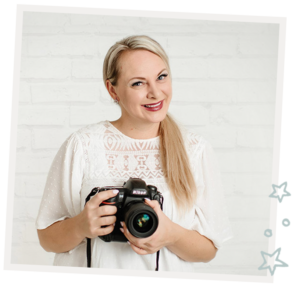
I'm
Lisa DiGeso
I’m on a mission to create uplifting online experiences for photographers ready to elevate their art, their business and their mindset.(...and have fun along the way!)
















